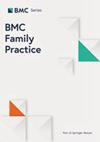Home care needs assessment among caregivers of children and adolescents with osteogenesis imperfecta: a cross-sectional study
IF 3.2
3区 医学
Q1 MEDICINE, GENERAL & INTERNAL
引用次数: 0
Abstract
Children and adolescents with complex medical issues need home care services; however, few studies have provided insight into the unmet home care needs of the families of patients with osteogenesis imperfecta (OI). In this study, we aimed to assess the home care needs of caregivers of children and adolescents with OI and the associated factors. A self-administered questionnaire was administered online to 142 caregivers of patients with OI aged 3–17 years between May and October 2022 from 25 provinces in China. The questionnaire comprised 15 questions on demographic variables and 14 questions on home care needs. Chi-square analysis was used to compare group differences for categorical variables. Multivariate binary logistic regression analysis was conducted to examine predictors of caregivers’ home care needs. The study findings indicated that 81.5% of caregivers had high home care needs. The three leading types of home care needs were helping the child carry out physical fitness recovery exercises at home (72.5%), understanding precautions regarding treatment drugs (72.5%), and relieving the child’s pain (70.4%). OI patients’ poor self-care ability (adjusted odds ratio = 5.9, 95% confidence interval = 1.8–19.0) was related to caregivers’ high level of home care needs. The findings of this study suggest that future scientific research and nursing guidance should focus on OI patients’ physical training, medication management, pain relief, fracture prevention, and treatment. In addition, caregivers of patients with poor self-care ability should receive special attention in the development of interventions. This study can help with addressing the unmet home care needs of caregivers of children and adolescents with OI. It is vital to develop a personalized intervention plan based on patients’ self-care ability.成骨不全症儿童和青少年照顾者的家庭护理需求评估:一项横断面研究
有复杂医疗问题的儿童和青少年需要家庭护理服务;然而,很少有研究能深入了解成骨不全症(OI)患者家庭未得到满足的家庭护理需求。本研究旨在评估成骨不全症儿童和青少年护理者的家庭护理需求及其相关因素。我们于2022年5月至10月期间对来自中国25个省份的142名3至17岁成骨不全症患者的护理人员进行了在线问卷调查。问卷包括15个人口统计学变量问题和14个家庭护理需求问题。采用卡方分析比较分类变量的组间差异。研究还采用了多变量二元逻辑回归分析来检验护理人员家庭护理需求的预测因素。研究结果表明,81.5% 的照顾者有较高的家庭护理需求。最主要的三种家庭护理需求分别是帮助患儿在家进行体能恢复锻炼(72.5%)、了解治疗药物的注意事项(72.5%)和缓解患儿的疼痛(70.4%)。开放性脊柱炎患者自我护理能力差(调整后的几率比=5.9,95%置信区间=1.8-19.0)与护理人员的家庭护理需求水平高有关。本研究结果表明,今后的科学研究和护理指导应重点关注 OI 患者的体能训练、药物管理、疼痛缓解、骨折预防和治疗。此外,在制定干预措施时,应特别关注自理能力差患者的护理人员。这项研究有助于满足患有开放性脊柱炎的儿童和青少年的护理人员尚未得到满足的家庭护理需求。根据患者的自我护理能力制定个性化的干预计划至关重要。
本文章由计算机程序翻译,如有差异,请以英文原文为准。
求助全文
约1分钟内获得全文
求助全文
来源期刊

BMC Family Practice
医学-医学:内科
CiteScore
3.20
自引率
0.00%
发文量
0
审稿时长
4-8 weeks
期刊介绍:
BMC Family Practice is an open access, peer-reviewed journal that considers articles on all aspects of primary health care research. The journal has a special focus on clinical decision making and management, continuing professional education, service utilization, needs and demand, and the organization and delivery of primary care and care in the community.
 求助内容:
求助内容: 应助结果提醒方式:
应助结果提醒方式:


